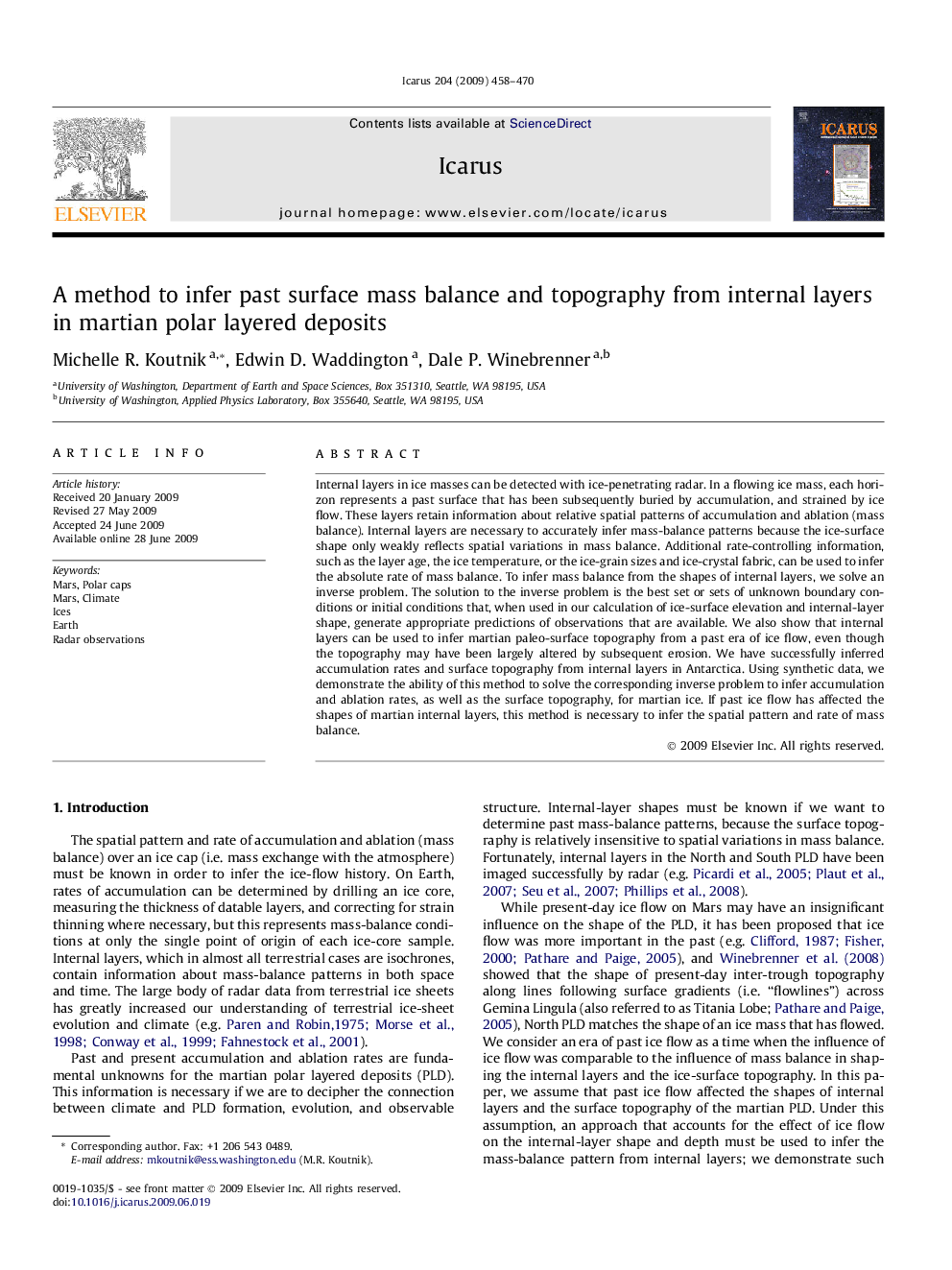| Article ID | Journal | Published Year | Pages | File Type |
|---|---|---|---|---|
| 1774746 | Icarus | 2009 | 13 Pages |
Internal layers in ice masses can be detected with ice-penetrating radar. In a flowing ice mass, each horizon represents a past surface that has been subsequently buried by accumulation, and strained by ice flow. These layers retain information about relative spatial patterns of accumulation and ablation (mass balance). Internal layers are necessary to accurately infer mass-balance patterns because the ice-surface shape only weakly reflects spatial variations in mass balance. Additional rate-controlling information, such as the layer age, the ice temperature, or the ice-grain sizes and ice-crystal fabric, can be used to infer the absolute rate of mass balance. To infer mass balance from the shapes of internal layers, we solve an inverse problem. The solution to the inverse problem is the best set or sets of unknown boundary conditions or initial conditions that, when used in our calculation of ice-surface elevation and internal-layer shape, generate appropriate predictions of observations that are available. We also show that internal layers can be used to infer martian paleo-surface topography from a past era of ice flow, even though the topography may have been largely altered by subsequent erosion. We have successfully inferred accumulation rates and surface topography from internal layers in Antarctica. Using synthetic data, we demonstrate the ability of this method to solve the corresponding inverse problem to infer accumulation and ablation rates, as well as the surface topography, for martian ice. If past ice flow has affected the shapes of martian internal layers, this method is necessary to infer the spatial pattern and rate of mass balance.
